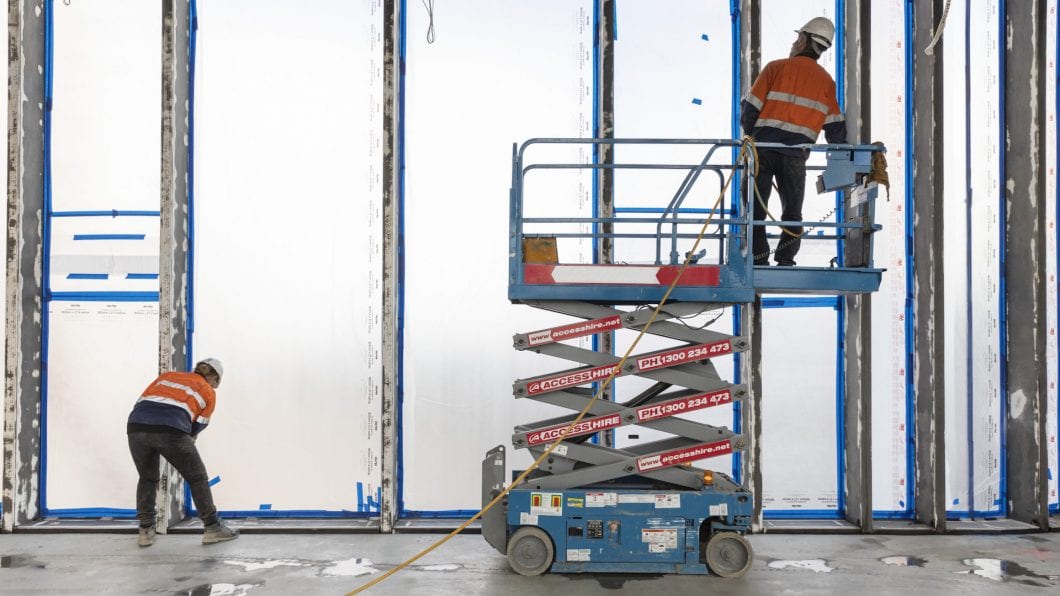Help us improve your experience. See content that is made for you!
See how IBM increased their efficiency by up to 30%!

Help us improve your experience. See content that is made for you!
See how IBM increased their efficiency by up to 30%!


You can imagine the scene in Pisa, Italy, 900 years ago. In 1178, a new bell tower was entering its fourth year of construction when – to the builders’ horror – it began to sink.
The Leaning Tower of Pisa was caused by one of the most famous mistakes in construction history: building shallow foundations on unstable subsoil. Now the 4-degree tilt is at the heart of Pisa’s tourism industry. But most building errors don’t turn out to be happy accidents.
Mistakes on projects can result in lost time, profit and reputation. Rework alone costs around $65.2bn in the US each year – and of course mistakes can damage vital client relationships for good.
So why do we make mistakes in construction and why are they so hard to solve? This blog will explore three common causes of errors and the psychology behind them – as well as a solution for companies to consider.
It may sound obvious, but a major factor behind mistakes is good old fashioned human error. Construction involves repetitive, complex tasks that humans aren’t always good at.
Studies have shown that monotonous tasks involuntarily switch the human brain into rest mode, making mistakes more likely. This repetitive work can be anything from a physical job on-site to transferring information between systems. In construction, the issue is exacerbated if businesses don’t have the right processes or tools in place to easily spot mistakes.
For example, the time pressure and manual processes involved in preconstruction can often lead to errors, as our recent research showed. One main contractor admitted, “I have put in an incorrect digit during tendering. It just takes one small slip in attention to make a big difference.”
Little blunders can have significant consequences. Most main contractors (86%) and subcontractors (78%) admit that errors are routinely made during the tender submission process that impact the project down the line – usually underestimating the timeline or labour needed. Simple human error can be the difference between finishing on time, on budget and with a profit.
With so many stakeholders and moving parts on every project, communication is critical in construction. But often, it isn’t easy to share the messages needed between contractors – and even within your organisation.
Before implementing a document management platform, Welsh subcontractor SAM Drylining ran into breakdowns in communication between the head office and jobsites. The team responsible for the commercial management of the business simply weren’t aware of what was actually happening on the ground.
“We were constantly running into difficulties where issues on sites were reported too late or not at all,” Director Kyle Spiller recalled. The company relied on paper for its on-site documentation, which was printed, annotated by hand and passed between sites. “It could take days, weeks or even months to pass the necessary information between individual sites and the head office.”
One of the factors contributing to miscommunication is what psychologists call signal amplification bias: as humans, we regularly fail to realise how little we’re actually communicating with others.
It’s common to assume that things should be obvious, especially with close relationships like colleagues – and we can become frustrated if the message has failed to land. On a site, you might think that what you’ve done or why you’ve done it is clear to your colleagues or collaborators. But often, that information goes unseen, and that can cause wider problems.
This is an industry-wide issue. Poor project data and miscommunication are responsible for 48% of all rework in the US, costing the sector $31.3bn in 2018 alone.
It’s easy to make an error. But those mistakes become all the more damaging in organisations where employees are afraid to highlight missteps because of fears about blame.
It’s always hard to admit to ourselves that we’ve made a mistake, especially if we think it isn’t in our nature. This is something psychologists call cognitive dissonance: if you believe that you’re competent and careful, it can be really hard to acknowledge that you’ve made a “careless” mistake.
It’s even more difficult to take responsibility for mistakes if you don’t think you can change your behaviour in the future – in other words, if it’s down to factors outside of your control. In construction, if bad processes make mistakes more likely, you might be less willing to acknowledge making them.
Admitting and addressing mistakes early in a project can make them less damaging. As a result, Autodesk’s report, Trust Matters, showed that construction businesses with higher trust levels also performed better financially. For example, these businesses miss fewer schedules, saving up to $4 million annually on projects. Greater transparency pays, in more ways than one.
There is a solution to address these causes of mistakes: improving your information-sharing using cloud-based technology. Digital platforms can make project information available on any device, to anyone who needs it, with updates shared in real-time.
Platforms like Autodesk Construction Cloud make it extremely easy for collaborators to make updates directly from the construction site, simplifying communication across the project.
This kind of document management reduces the incidence of errors caused by miscommunication or outdated information. It can also make mistakes easier and quicker to spot and fix. Importantly, a better information-sharing system creates greater accountability for everyone on the project – and can actually make it easier for workers to own up to a mistake.
This was one benefit experienced at SAM Drylining when the firm implemented a digital platform. Teams are encouraged to be open and upfront about the status of work, while management are able to check the progress on projects instantly. “The transparency that the Autodesk Construction Cloud has brought to the business is absolutely priceless,” said Kyle Spiller. “It’s transformed the mindset on jobsites and has definitely boosted our productivity.”
Over time, these kinds of digital platforms can even enable firms to spot errors before they are made. With in-built data analysis tools, business leaders can see common sources of mistakes on projects and implement process changes. But this all starts with better information-sharing.
Mistakes are present in an industry as complicated as construction. But businesses can establish the tools and processes to set people up for success – and help them to spot errors before they become major issues. This will in turn create a more profitable business, and a safer, better place to work.
“We won’t be going back”: Learn how SAM Drylining created a culture of transparency through better document management

May we collect and use your data?
Learn more about the Third Party Services we use and our Privacy Statement.May we collect and use your data to tailor your experience?
Explore the benefits of a customized experience by managing your privacy settings for this site or visit our Privacy Statement to learn more about your options.